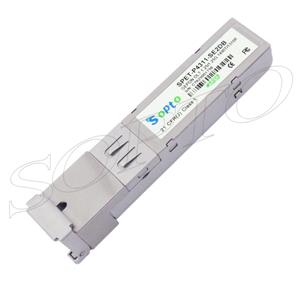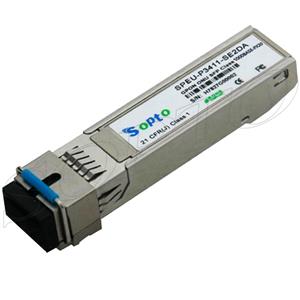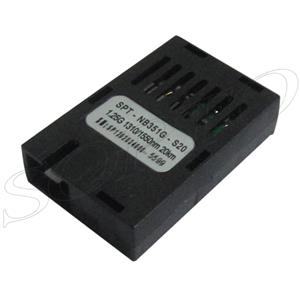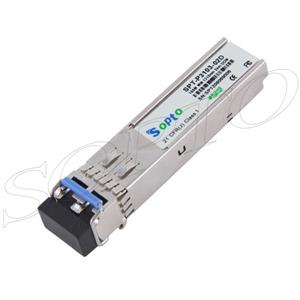-

- Sopto Home
-

- Special Topic
-

- Module Knowledge
-

- Fiber Optic Transceiver Overview
Module Knowledge
- Tips for Buying 10G XFP Transceivers
- XFP Transceivers for Telecommunications
- Three Types of Ethernet SFP Transceiver Modules Introduction
- Info about High Density CXP Optical Module
- Multipurpose CFP Optical Modules
- Info about CFP Management Interface
- SFP+ Transceivers Short Range Module Overview
- 3 Reasons Every Network Needs GLC-LH-SM Transceiver
- Is the GLC-SX-MM Transceiver Right for Your Switch?
SOPTO Special Topic
Certificate



Guarantee
Except products belongs to Bargain Shop section, all products are warranted by SOPTO only to purchasers for resale or for use in business or original equipment manufacturer, against defects in workmanship or materials under normal use (consumables, normal tear and wear excluded) for one year after date of purchase from SOPTO, unless otherwise stated...
Return Policies
Defective products will be accepted for exchange, at our discretion, within 14 days from receipt. Buyer might be requested to return the defective products to SOPTO for verification or authorized service location, as SOPTO designated, shipping costs prepaid. .....
Applications
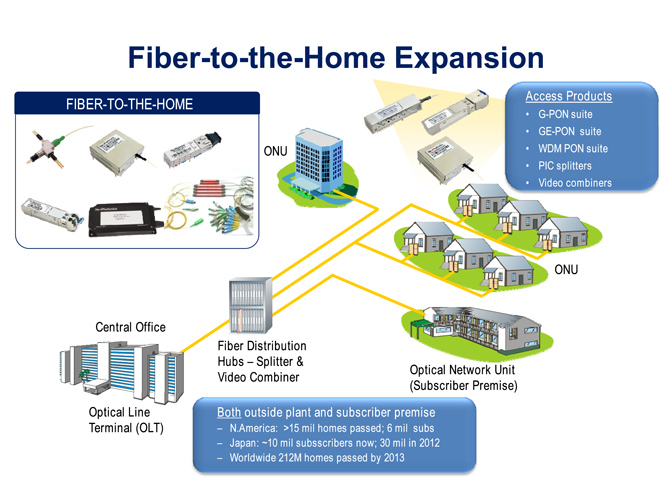 Fiber Optic Transceiver Modules can be applied to these occasions or fields.
Fiber Optic Transceiver Modules can be applied to these occasions or fields.
Ethernet
IPTV
FTTX
Security
Video Monitor
SDH/SONET
Data Communication
Storage Area Networks
SOPTO Products
- Fiber Optic Transceiver Module
- High Speed Cable
- Fiber Optical Cable
- Fiber Optical Patch Cords
- Splitter CWDM DWDM
- PON Solution
- FTTH Box ODF Closure
- PCI-E Network Card
- Network Cables
- Fiber Optical Adapter
- Fiber Optical Attenuator
- Fiber Media Converter
- PDH Multiplexers
- Protocol Converter
- Digital Video Multiplexer
- Fiber Optical Tools
- Compatible
Performance Feature
Stable
Low cost
Small size
Economic
Dust-proof
High speed
Hot-pluggable
Good EMI, EMC
Wide appliaction field
DDM function available
Long transmission distance
Good Anti-static performance
Module Knowledge
Recommended
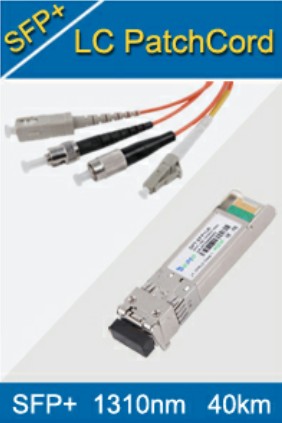
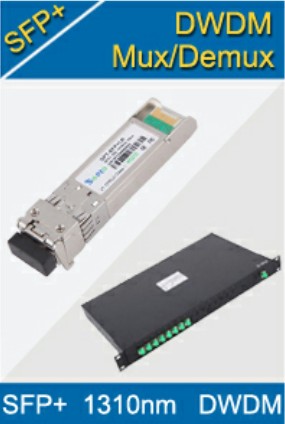
Origin of Fiber Optic Transceiver Module
The fiber optic transceiver module is one of the connection modules, which realizes the conversion between the optical signal and the electrical signal. The fiber optic transceiver module is mainly composed by optoelectronic devices, functional circuitry and optical interface, in which the optoelectronic devices includes transmitting and receiving two parts.
The fiber optical module was first produced in 1999; and the earliest fiber optical module is 1X9 package with SC connector, directly solidified in the communications equipment on the circuit board, as a fixed optical modules.
After that, 1X9 optical modules are gradually toward miniaturization, hot-swappable direction. Optical module products began to be divided into two aspects of development, one is hot-pluggable optical module GBIC, the other is the small SFF 2X5 or SFF 2X10 with LC header, directly solidified in the circuit board. GBIC and SFF optical modules both have achieved a wide range of applications.
1x9 Optical Transceiver
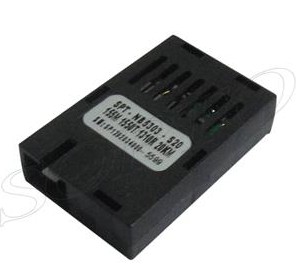
1x9 optical transceiver modules are state-of-the-art components designed expressly for the building of high-speed bi-directional communication links that require data rates of up to 1.25 Gb/s. The modules operate at special extended voltage and temperature (-10 to 85 C) ranges. 1x9 optical transceiver power dissipation is less than 1 watt for the 5 V and the 3.3 V versions. The modules’ metal enclosure not only makes them sturdier, but also improves the transceiver’s FCC test margins.
This emissions and ESD control is particularly important in applications with sensitive multiport hubs and switches.These high-speed transceiver modules are well known throughout the industry for their superior quality, reliability, and affordability. An evaluation board is available for test and demonstration purposes.
GBIC Module
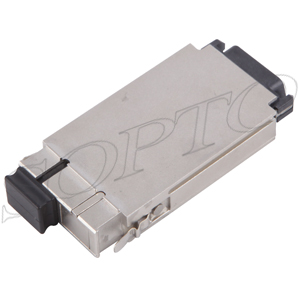
The GBIC module was once widely used in switches, routers and other network branded products. The old Cisco, Nortel and other manufacturers widely adopted the GBIC module for their switches and routers. Compared to the GBIC module and the 1X9 package module, is very obvious advantages, as it can support hot plug, make GBIC products as an independent module, users can easily update the optical module, fault location.
However, with the continuous development of the network, the disadvantages of GBIC module are gradually. The main disadvantage is too big because the business board optical density is low so that the business board can’t accommodate a sufficient number of GBIC, unable to adapt to the rapid development of the network trend.
SFP Module
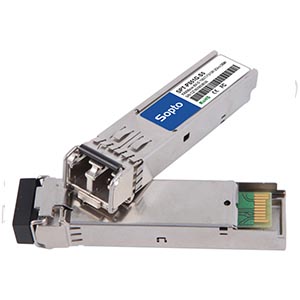
SFP module is the most widely use product. SFP module inherits the hot swappable characteristics of GBIC and also draws on the miniaturization advantages of the SFF module with the LC connector. SFP module is reduced the volume and consumption by designing the CDR and EDC outside the module. SFP module is used to connect network devices, such as, switches, routers and others. It is widely applied to the telecommunications and data communications.
SFF Module
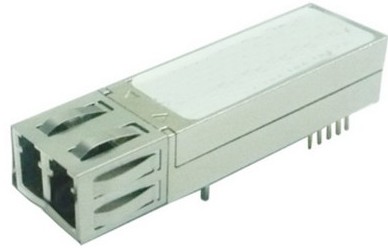
SFF module is another branch of the development of the fiber optic transceiver module. Currently, the SFF modules are widely used in the ONU of EPON systems. Since the ONU products of EPON systems are usually placed in the client which needs the ONUs be fixed, not hot-pluggable, the SFF is popular in EPON systems. And with the rapid development of EPNO technology, the SFF market share is also gradually expanded.
XENPAK Module
XENPAK is an important step in the evolution of the optical modules. The XENPAK architecture provides a XAUI interface for the Media Access Controller.
Compared with not hot-pluggable modules, XENPAK modules is very attractive. But is can’t meet some important market demand. The power consumption of XENPAK is usually 10W, which will cause a certain influence to the structure size because it increase the cost of manufacturing printed circuit board and reduce the precious line space.
X2 Module
X2 modules also adopt the XENPAK electrical interface, but there are a few local exceptions. X2 offers a 4bit port address space, a bit less than XENPAK. X2 also reduces the number of power supply pin. In the aspect of optical technology, X2 supports 10GbE, OC192 synchronous optical network, 10GFC and other standards.
XFP Module
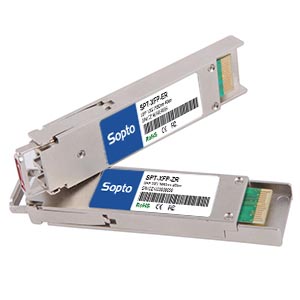
10G small hot-pluggable XFP module is different from the XENPAK architecture and its 4-channel interface. XFP module adopts full-speed single serial module of a XFI (10Gb serial interface) to replace the XENPAK and its derived products. Since the XFP module doesn't have serializer/ deserializer, XFP is smaller, cheaper than XENPAK. And its’ power consumption is also less than XENPAK.
SFP+ Module
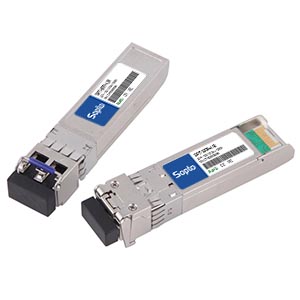
SFP+ module is smaller than XFP module. It transferred the circuit, which is used for the clock and data recovery, from the chip to the card. With its miniaturization, low cost and other advantages, SFP+ meets the high-density demand of device. From 2002 to 2010, SFP+ has replaced XFP to be the mainstream of 10G market.
QSFP+ Module
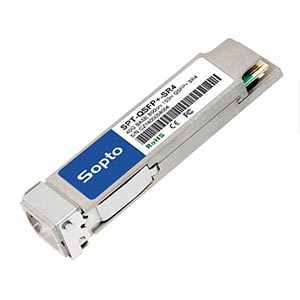
Quad Small Form-factor Pluggable, the QSFP+ has 4-channel SFP+ interfaces. QSFP+ is designed as the high-speed pluggable solution to meet higher-density of market. As a fiber optical solution, the speed and density are both better than the 4-channel CX4 interface. Since QSFP+ can support 4 channels’ data transmission at 10Gbps per channel with the same port size of XFP, the density of QSFP+ ups to 4 times of XFP products.
CSFP Module
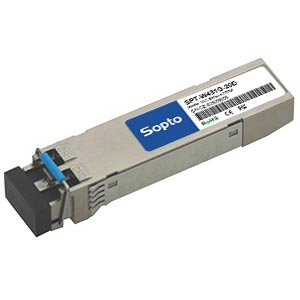
The CSFP transceivers are high performance, cost effective modules supporting 2.488Gbps and 20km transmission distance with SMF. The transceiver consists of three sections: a laser transmitter, a photodiode integrated with a trans-impedance preamplifier (TIA) and MCU control unit. All modules satisfy class I laser safety requirements.
The CSFP MSA defines a transceiver mechanical form-factor with latching mechanism and a host board, SFP-like, electrical edge connector and cage. The CSFF MSA also defines a transceiver mechanical form-factor. The dual-channel CSFP is compatible with the standard SFP cage.
The single-channel CSFP and CSFF are half the size of the industry-standard SFP and SFF packages. The CSFF design is modular to enable configurations of integrated 2ch modules. In future Sopto will develop 4ch CSFP modules. These highly integrated compact transceiver modules will enable network system vendors to increase port density and data throughput, while reducing network equipment cost.
CFP Module
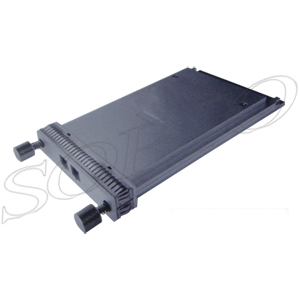
CFP is a hot-pluggable transceiver that supports a wide range of 40 and 100 Gb/s applications such as 40G and 100G Ethernet, OC-768/STM-256, OTU3, and OTU4. Different versions of CFP modules can support various link distances over either multimode or single mode fiber optics.
The CFP module includes numerous innovative features like advanced thermal management, EMI management and enhanced signal integrity design, as well as an MDIO-based management interface.
You May Want to Know:
You May Like:






.JPG)

